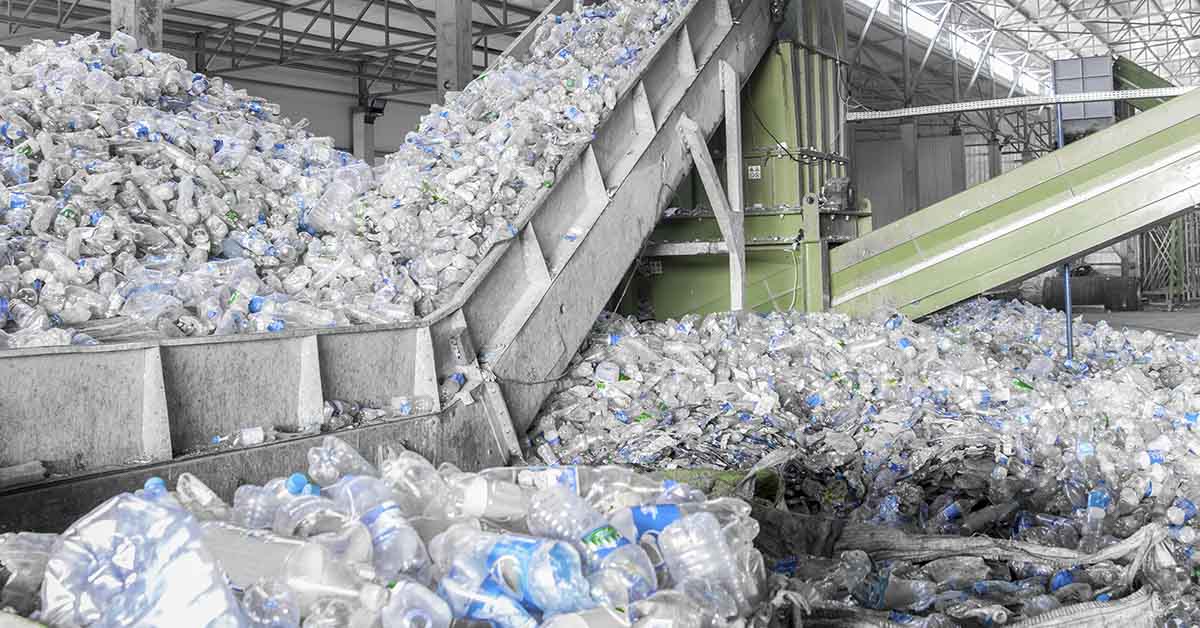Recycling, and more specifically, plastic recycling, is generally thought of as something we need to do for the health of the planet. Plastics take years to break down, between 20-600. Additionally, this all depends on the type of plastic, but is alarming, nonetheless. Many studies have shown microplastics found in our water supply and in the digestive tracts of marine wildlife and birds. As if that wasn’t horrific enough, microplastics have even been found in breast milk. With all this exposure, people have fought hard to advocate for more recycling and less plastic production. However, despite these numbers, a report done by Greenpeace found that only 5% of plastics are being recycled, meanwhile, production is soaring.
Types of Plastic
To begin with, there are 7 types of common household plastics, and each bottle or container has a number on the bottom. This number indicates the type of plastic that was used to make the product. Number 1 is polyethylene terephthalate (PET), used to make water and soda bottles. Number 2 is high-density polyethylene (HDPE), used to make thicker bottles like shampoo or cleaning products. Lastly, plastics 3-7 are used to make things like food containers, children’s toys, and plastic bags.
Plastic Recycling Statistics
The Greenpeace report shows 51 million tons of plastics were used or thrown out in 2021 by households in the United States. Of that, only 2.4 million tons were recycled. Greenpeace’s survey found that plastics 1 and 2 had a plastic recycling rate of only 20.9% and 10.3%. Meanwhile, 3-7 had a recycling rate of less than 5%. These numbers are lower than a Greenpeace survey done in 2020 and reflect the fact that plastics 3-7 don’t meet the Federal Trade Commission’s standards of “recyclable”.
Why Numbers are so Low?
There are a handful of reasons that plastic recycling numbers are dropping. For instance, only 2 types of plastics are widely accepted at the nation’s 375 material recovery facilities. These recycling facilities aren’t available to high majority of the population, estimated to be around 60%. Also, production lines are making new products from new materials, rather than using plastic recycling methods. China once purchased America’s used plastic for recycling purposes but stopped as of 2014 due to the Trade War. Additionally, plastic is generated in high quantities but is challenging to collect. Furthermore, plastic has to be separated from waste, which is difficult, and time-consuming. One of the biggest obstacles is the plastic recycling process itself. The process requires the use of harsh chemicals to break down materials. In turn, this negatively impacts the health of plastic recycling workers and the environment.
Who is Greenpeace?
Greenpeace is a worldwide organization that strives to put an end to global, environmental dangers. In short, the organization was started in 1971 when a small group from Vancouver set sail to an island off the coast of Alaska, called Amchitka Island. They boarded a tiny fishing vessel with the intent to peacefully protest U.S. Nuclear testing. They brought awareness to the world, with the help of their supporters. Greenpeace has grown exponentially and spent the last 50 years fighting a number of other environmental battles. In an effort to bring to light the failures of plastic recycling efforts, Lisa Ramsden, a Greenpeace USA campaigner, called out a number of big-name companies saying, “Industry groups and big corporations have been pushing for recycling as a solution. By doing that, they have shirked all responsibility.” Lisa mentions companies like Coca-Cola and Nestle, and a few others.
Plastic Recycling Organizations
However, there is some good news on the topic. Innovators and entrepreneurs have started companies like 4Ocean and Ocean Cleanup. These companies work to clean up plastics that have polluted our oceans and other bodies of water. Then, they turn the plastics into other products. For instance, bracelets and sunglasses. RePurpose Global encourages and often finances big name brands and growing businesses to go “plastic neutral”. Meaning companies recycle the same amount of plastic, in weight, that they use. Additionally, well known brands like Patagonia and Addidas, have also begun to use recycled plastics in their products.
In conclusion, we are surrounded by pollutants and our ecosystem is suffering immensely. Large companies have most of the power to slow plastic production and ensure a higher plastic recycling volume. In contrast, if we all do our part and work together, we can treat Earth a little better. Hopefully, restoring some balance to our ecosystem.
Keep Reading: Scientists Discover Plastic-Eating Worms That Digest Styrofoam
Sources
- Cleanup, O. (2022, October 21). The Ocean Cleanup. Retrieved November 4, 2022, from https://theoceancleanup.com/
- Ivanova, I. (2022). Recycling plastic is a total bust, industry critics say. CBS News. Retrieved November 4, 2022, from https://www.cbsnews.com/news/plastic-recycling-rate-5-failure-say-environmentalists/
- News, C. B. S. (2022, October 24). Plastic recycling a “failed concept,” study says, with only 5% recycled in U.S. last year as production rises. CBS News. Retrieved November 4, 2022, from https://www.cbsnews.com/news/plastic-recycling-failed-concept-us-greenpeace-study-5-percent-recycled-production-up/?ftag=CNM-00-10aab6a&linkId=186813058
- Organization, 4O. (n.d.). The 4ocean bracelet – every purchase pulls a pound of plastic. 4ocean. Retrieved November 4, 2022, from https://www.4ocean.com/
- Science for a changing world, usgs. (n.d.). Microplastics in our nations’s waterways. Microplastics in our Nation’s Waterways. Retrieved November 4, 2022, from https://labs.waterdata.usgs.gov/visualizations/microplastics/index.html
- US Department of Commerce, N. O. and A. A. (2016, April 13). What are microplastics? NOAA’s National Ocean Service. Retrieved November 4, 2022, from https://oceanservice.noaa.gov/facts/microplastics.html

